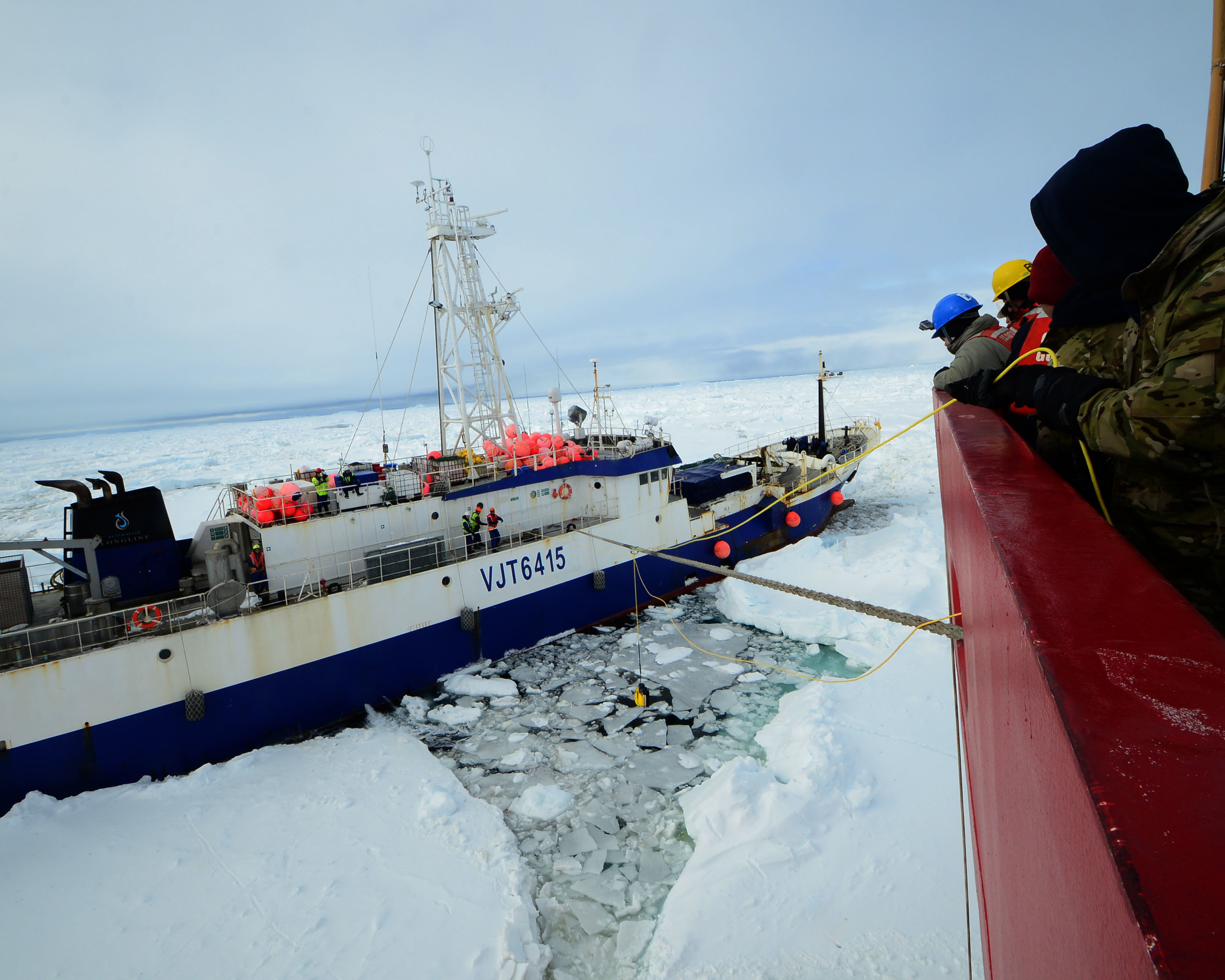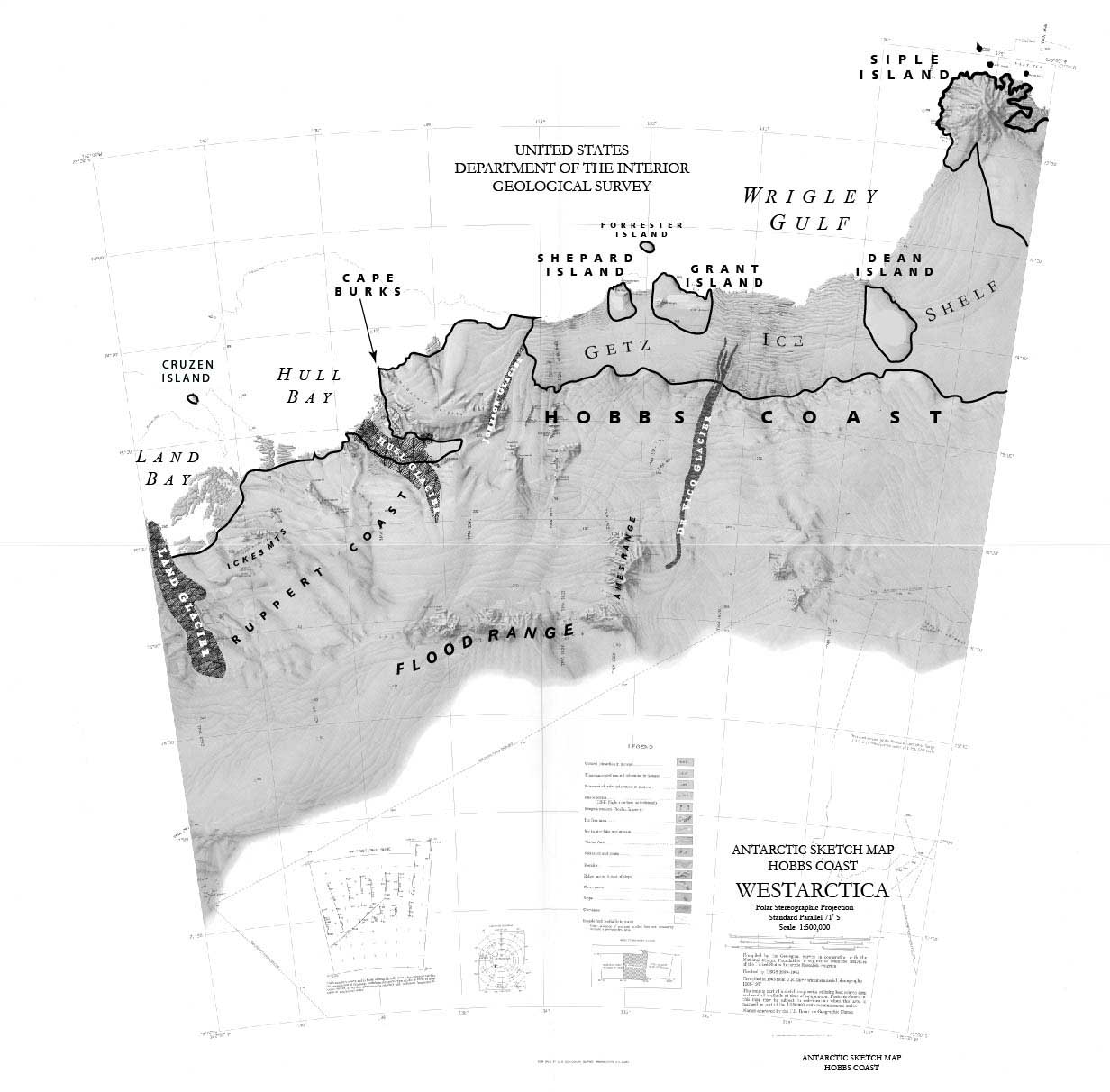Difference between revisions of "Cape Burks"
Jump to navigation
Jump to search
Westarctica (talk | contribs) (Created page with "File:Polar Star frees vessel from Antarctic ice.jpg|thumb|Coast Guard Cutter Polar Star launch a remote operated vehicle into the water to inspect the disabled fishing vesse...") |
(map) |
||
| Line 1: | Line 1: | ||
[[File:Polar Star frees vessel from Antarctic ice.jpg|thumb|Coast Guard Cutter Polar Star launch a remote operated vehicle into the water to inspect the disabled fishing vessel Antarctic Chieftain, beset by ice near Cape Burks]] | [[File:Polar Star frees vessel from Antarctic ice.jpg|thumb|Coast Guard Cutter Polar Star launch a remote operated vehicle into the water to inspect the disabled fishing vessel Antarctic Chieftain, beset by ice near Cape Burks]][[File:Hobbs Coast2.jpg|thumb]] | ||
'''Cape Burks''' is a prominent exposed-rock cape on the northwestern seaward extension of [[McDonald Heights]], marking the east side of the entrance of [[Hull Bay]] on the coast of [[Westarctica]]. | '''Cape Burks''' is a prominent exposed-rock cape on the northwestern seaward extension of [[McDonald Heights]], marking the east side of the entrance of [[Hull Bay]] on the coast of [[Westarctica]]. | ||
Revision as of 11:11, 2 May 2018
Cape Burks is a prominent exposed-rock cape on the northwestern seaward extension of McDonald Heights, marking the east side of the entrance of Hull Bay on the coast of Westarctica.
Discovery and name
The cape was sighted and mapped from the USS Glacier, 31 January 1962, and was named for Lieutenant Commander Ernest Burks, U.S. Navy, senior helicopter pilot on the Glacier and the first person to set foot on the cape.
Human settlement
Russkaya Station was established on Cape Burks by the Soviet Union in 1980 and later mothballed in 1991 after the fall of communism.
Animals
There is an Adélie penguin colony at Cape Burks.

